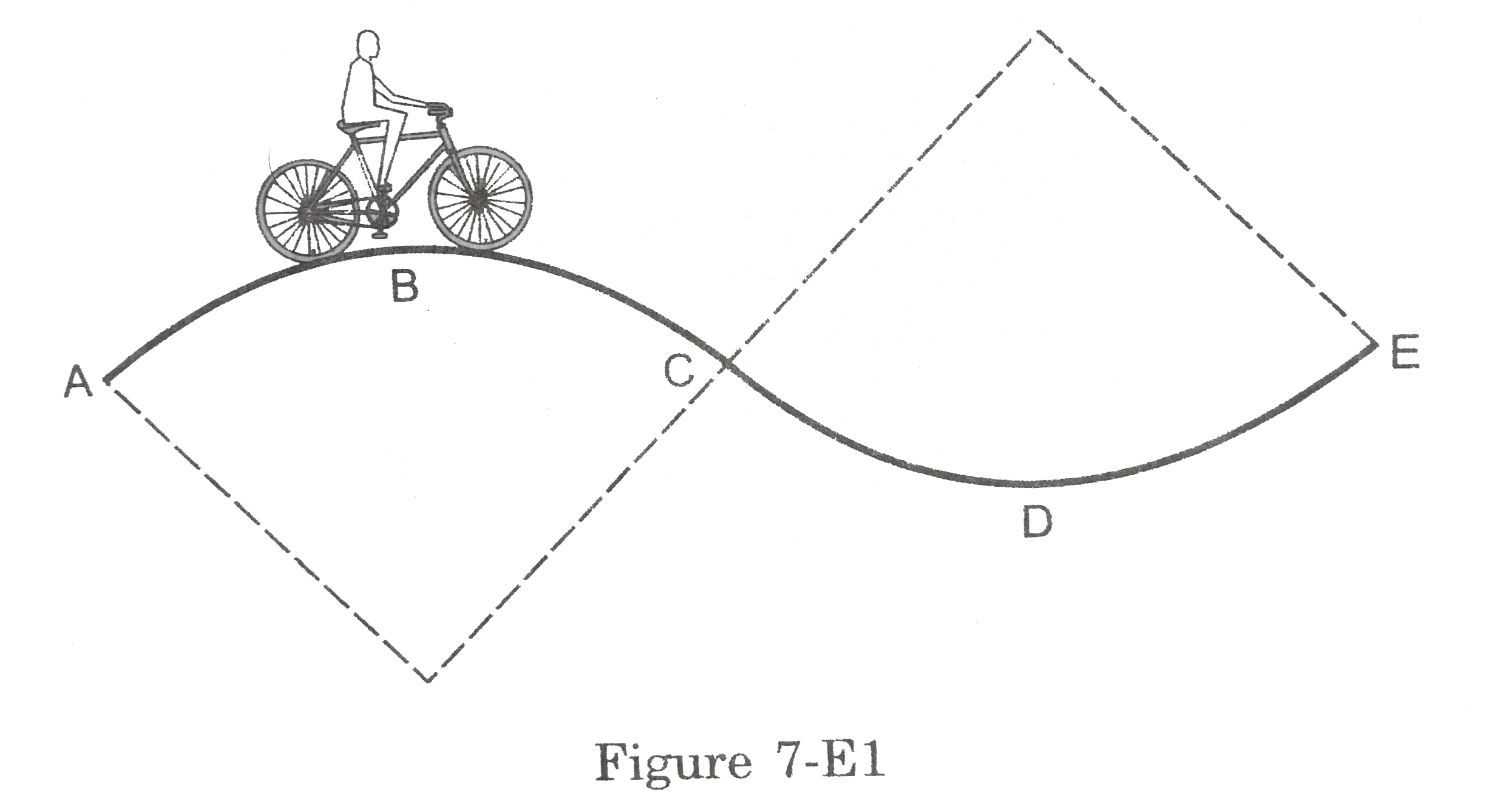A horse exerts a pull on a cart of 300 N so that the horsecard system moves with a uniform speed of 18 km/h on a level road. Calculate the power developed by the horse in watt and alwo find its equivalent in horsepower.
Force (pull) exerted by the horse on the cart =300 N
Uniform speed of the cart =18km/h
=18×518m/s
=5m/s
∴ Power developed by the horse = Force × speed
=300×5W
=1500W
=1500746H H.P (∴ H.P.=746W)
=2.01H.P.
=2H.P( Approx).
Similar Questions
An ox can a maximum force of 1000 N.It is taking part in a cart race and is able to pull the cart at a constant speed of 30 ms−1 while making its best effort.Calculate the power developed by the ox.
View SolutionA boy is cycling with a speed of 10 km h−1 on a hill of slope 1/20 . The weight of the boy and the cycle is 120 kg . Calculate the work done by the man per minute . Also find his horse power .
View Solution
Knowledge Check
A horse exerts a pull a 500 N on a cart so that horse cart system moves with a uniform velocity of 36km/h what is the power developed by the horse in horse power ?
A6.7HPB7.8HPC8.3HPD10.5HP
A track consists of two circular pars ABC and CDE of equal radius 100 m and joined smoothly as shown in figure.Each part subtends a right angle at its centre. A cycle weighing 100 kg together with rider travels at a constant speed of 18 km/h on the track. A. Find the normal contact force by the road on the cycle when it is at B and at D. b.Find the force of friction exerted by the track on the tyres when the cycle is at B,C and D. c. Find the normal force between the road and the cycle just before and just after the cycle crosses C. d. What should be the minimum friction coefficient between the road and the tyre, which will ensure that the cyclist can move with constant speed? Take g=10ms2

View SolutionA horse pulls a cart upto 200m in 5 minutes, exerting a force of 750N along the displacement of the cart. Find its power output measured in watts and in horsepower.
View SolutionA track consists of two circular pars ABC andCDE of equal rdius 100 m and joined smoothly as shown in figure.Each part sutends a right ngle at its centre. A cycle weighing 100 kg together with rider travels at a constant speed of 18 km/h on the track. A. Findteh nromal contct force by tehroad on the cycle whenit is at B and at D. b.Findteh force of friction exerted by the track on the tyres when the cycle is at B,C and D. c. Find the normal force between teh road and teh cycle just before and just after the cycle crosses C. d. What should be the minimum friction coefficient between the road and the tyre, which will ensure that teh cyclist can move with constant speed? Take g=10ms2

View SolutionA track consists of two circular pars ABC andCDE of equal rdius 100 m and joined smoothly as shown in figure.Each part sutends a right ngle at its centre. A cycle weighing 100 kg together with rider travels at a constant speed of 18 km/h on the track. A. Findteh nromal contct force by tehroad on the cycle whenit is at B and at D. b.Findteh force of friction exerted by the track on the tyres when the cycle is at B,C and D. c. Find the normal force between teh road and teh cycle just before and just after the cycle crosses C. d. What should be the minimum friction coefficient between the road and the tyre, which will ensure that teh cyclist can move with constant speed? Take g=10ms2

View SolutionAn elevator that can carry a maximum load of 1500 kg (elvator+ passengers) is moving up with a constant speed of 2 ms−1. The frictional force opposing the motion is 3000 N. Find the minmum power delvered by the motor to the elevator in watts as well as in horse power (g=10ms−2)
View SolutionAn elevator that can carry a maximum load of 1500 kg (elvator+ passengers) is moving up with a constant speed of 2 ms−1. The frictional force opposing the motion is 3000 N. Find the minmum power delvered by the motor to the elevator in watts as well as in horse power (g=10ms−2)
View SolutionA car of mass m 1600 kg, while moving on any road, experience resistance to its motion given by (m+nV2) newton, where m and n are positive constants. On a horizontal road the car moved at a constant speed of 40 m/s when the engine developed a power of 53 KW. When the engine developed an output of 2 KW the car was able to travel on a horizontal road at a constant speed of 10 m/s. (a) Find the power that the engine must deliver for the car to travel at a constant speed of 40 m/s on a horizontal road. (b) The car is able to climb a hill at a constant speed of 40 m/s with its engine working at a constant rate of 69 KW. Calculate the inclination of the hill (in degree)
View Solution
